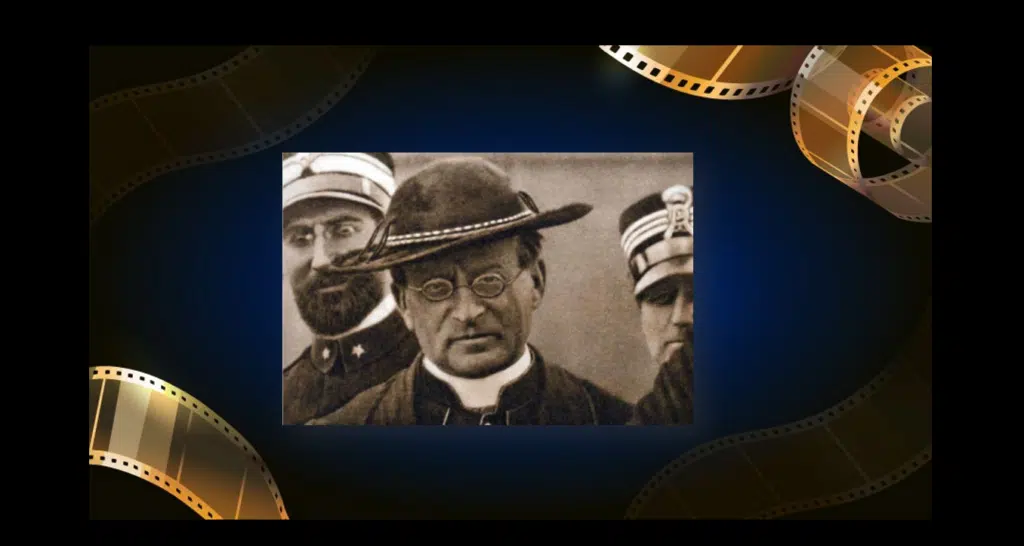
ROUGH CUT: Sean Combs, Babylon, and Two Popes That Tried to Warn Us
In a single image, the Trump-as-Pope fake captured what I’ve circulated in much of my work—especially the pieces steeped in Catholic themes. The connection between America and Rome isn’t just symbolic–whether we’re Catholic or not. It is something that will impact–is already impacting–all of us.
As Sean Combs’ trial got underway yesterday, because we’re not holding our breath on anything substantive coming of it, it felt like the right time to finally dust off two papal encyclicals I’ve been waiting for this very moment to discuss. Combs may be on trial for specific crimes, but the culture that enabled him—and which rewarded and protected his and others’ worst behavior—is what many a religious shepherd have warned about all along.
Then, as if sent to tee up the point, Trump weighed in—not on the Combs trial, but on a parallel battlefield: the film industry. In a post that sounded equal parts economic policy and cultural frustration, not to mention his typical narrative deployment for us, Trump wrote the following on Truth Social:
“The Movie Industry in America is DYING a very fast death. Other Countries are offering all sorts of incentives to draw our filmmakers and studios away from the United States. Therefore, I am authorizing the Department of Commerce, and the United States Trade Representative, to immediately begin the process of instituting a 100% Tariff on any and all Movies coming into our Country that are produced in Foreign Lands. WE WANT MOVIES MADE IN AMERICA, AGAIN!”
Now, I’ll leave the tariff question for others to litigate and wax political on. I’ve already given my 17 cents on Trump’s tariffs weeks ago—and time and new circumstances have only confirmed the thesis: this isn’t just economic policy, it’s narrative warfare. And it involves all of us–the People.
Tariff aspect aside, Trump’s post gives us the perfect excuse to open up a deeper vault—one that neither Hollywood nor the post-1960s Church of modern discourse particularly wants you to open.
I am currently reading, bit by bit, a book by Kenneth Anger titled Hollywood Babylon. It dispels any notion that somehow Hollywood was at any point pure and wholesome. Here is the Amazon blurb:
“Picking through the slag heap of the Hollywood dream factory, [Kenneth] Anger has put together a truly prodigious anthology of star-studded scandal.”—The New York Times
Welcome to Hollywood. Take a walk down “The Boulevard of Broken Dreams,” where starlets, sex goddesses, matinee idols, American aristocracy, and Mafia moguls meet. It’s a town made manic in its heyday by “joy powder” and cocaine-crazed comedies, seduced by vamping heroin heroines, shaken by Fatty Arbuckle’s orgiastic excesses and Errol Flynn’s amoral extravagances, stunned by Marilyn Monroe’s tragic suicide and Sharon Tate’s brutal murder.
Here, as never revealed before, is the scalding reality behind the glittering façade: the true stories and darkest secrets behind the lurid headlines that have titillated the world and electrified the nation for decades.
In the spirit of my series on old papal writings and how they apply to today’s America, ones that stand in stark contrast to more recent ones, we’re going to talk about two papal encyclicals—Vigilanti Cura by Pope Pius XI (1936), and Miranda Prorsus by Pope Pius XII (1957)—and what the Church before the 1960s changes warned us about when it came to the film industry.
Yes, the Church had something to say about Hollywood. And no, it wasn’t limited to pontificating about “indecency” or asking for more wholesome fare.
I wish I had paid heed to them, or even been exposed to this treasure trove of lessons, back over ten years ago when I was chasing a movie career as a screenwriter, and fell hook-line-and-sinker for the dark and tangled world New Orleans and its tax credits. I was duped, and I deserved it. As always, I write today as one bringing a caveat based on both pattern recognition and personal failure, not as someone who has done no wrong.
Let’s begin with Pius XI’s Vigilanti Cura, published toward the end of the interwar years, during the golden age of silent film and just as talkies were hitting their stride. The pope recognized the reach of this medium, and he sounded the alarm.
There is no need to point out the fact that millions of people go to the motion pictures every day; that motion picture theatres are being opened in ever increasing number in civilized and semi-civilized countries; that the motion picture has become the most popular form of diversion which is offered for the leisure hours not only of the rich but of all classes of society.
At the same time, there does not exist today a means of influencing the masses more potent than the cinema. The reason for this is to be sought for in the very nature of the pictures projected upon the screen, in the popularity of motion picture plays, and in the circumstances which accompany them.
The power of the motion picture consists in this, that it speaks by means of vivid and concrete imagery which the mind takes in with enjoyment and without fatigue. Even the crudest and most primitive minds which have neither the capacity nor the desire to make the efforts necessary for abstraction or deductive reasoning are captivated by the cinema. In place of the effort which reading or listening demands, there is the continued pleasure of a succession of concrete and, so to speak, living pictures.
This power only grows stronger with sound and pageantry.
This power is still greater in the talking picture for the reason that interpretation becomes even easier and the charm of music is added to the action of the drama. Dances and variety acts which are sometimes introduced between the films serve to increase the stimulation of the passions.
But it is more than a question of aesthetics—it is about moral power. And who wields it:
Everyone knows what damage is done to the soul by bad motion pictures. They are occasions of sin; they seduce young people along the ways of evil by glorifying the passions; they show life under a false light; they cloud ideals; they destroy pure love, respect for marriage, affection for the family. They are capable also of creating prejudices among individuals and misunderstandings among nations, among social classes, among entire races.
Does this not sound like cultural Marxism? Communism? The forerunners of everything we bemoan about the Democrats today?
The same toxic blend that destroyed czarist Russia in the Bolshevik Revolution, brought about two world wars, and has now taken over our classrooms, streaming platforms, and even our pulpits?
The pope acknowledged that cinema could be a force for good—but in the real world infected by fallen humanity, such ideals are impossible when people’s viewing habits are left on their own, unwitting and unmitigated. The industry, even in 1936, was already captured. Not just by “the state”—but by something far worse beneath: a global network of private interests, animated by that ancient enmity we rarely name. These forces have no allegiance to truth, to beauty, or to the salvation of souls.
Or to Jesus Christ.
Is there any wonder Christ called him a “murderer from the beginning?” (Jn 8). Not just a liar, but a murderer.
A murderer of what exactly?
A murderer of souls.
Pius XI saw it coming. And he warned us that it wouldn’t just be the state doing the capturing—it would be private networks, financial puppeteers, and ancient ideologies hiding behind a studio system, behind the seeming innocence of relaxation and leisure.
It is unfortunate that, in the present state of affairs, this influence is frequently exerted for evil. So much so that when one thinks of the havoc wrought in the souls of youth and of childhood, of the loss of innocence so often suffered in the motion picture theatres, there comes to mind the terrible condemnation pronounced by Our Lord upon the corrupters of little ones: “whosoever shall scandalize one of these little ones who believe in Me, it were better for him that a millstone be hanged about his neck and that he be drowned in the depths of the sea.”
I remind you, reader: this is 1936, not 1966 or 1996. What would Pius XI write today?
This is why he urged bishops across the globe to establish national reviewing offices–indeed a single office ultimately–to work with “painstaking vigilance” to set moral standards and to promote the salvation of souls in times of leisure and recreation.
If the Bishops of the world assume their share in the exercise of this painstaking vigilance over the motion picture — and of this We who know their pastoral zeal have no doubt — they will certainly accomplish a great work for the protection of the morality of their people in their hours of leisure and recreation. They will win the approbation and the approval of all right thinking men, Catholic and non-Catholic, and they will help to assure that a great international force — the motion picture — shall be directed towards the noble end of promoting the highest ideals and the truest standards of life.
And that’s where the hammer really drops. Because if you’ve followed my work, you know I’ve long said that the solution to narrative warfare is not to beg the powers that be for better stories, not even Trump the master storywriter (or, sh*t-starter) himself—but to tell our own.
This is why the people must keep their eyes on their shepherds and why it is salutary to question when issues of morality are violated. Just “going along with it” creates the type of person I became and still can be again if I’m not vigilant over my senses and passions myself. But the damage has been done.
None of this is new. The Church saw the story beyond the screen mutating in the 1930s. They knew it about individuals like me, they knew it about society at large, and they knew it about the quickening infiltration of its seminaries and churches.
Have you seen the footage of communists boasting that they inundated Catholic seminaries with thousands of plants in the early 20th century, a watershed breakthrough that saw the dripping of infiltration over the centuries turn into a massive, diabolical flood?
Now why would they do that?
Because they understood something we forgot some time ago, something it seems to me Trump is trying to resurrect inside us–
If you control the story, you control the soul. And the story, the soul, of the Catholic religion has been hijacked.
As the late Bishop Fulton Sheen once said, “There are not one hundred people in the United States who hate the Catholic Church, but there are millions who hate what they wrongly perceive the Catholic Church to be.”
I helped write that misleading story with the first half of my life. I have been granted an opportunity to right that regrettable wrong.
In Part II, we’ll turn to Miranda Prorsus—where Pope Pius XII picks up the baton and continues the fight from the screen into the heart of the society. Because what began in Hollywood didn’t stay in Hollywood, and what his predecessor wrote didn’t stay in the 1930s. It continued its nefarious creep into the seminaries, the sanctuaries, the textbooks, the classrooms–into human imagination and intelligence itself.
And if we don’t learn to discern the war of images, the war of stories, we may never see who’s really been writing the script.
—
May everyone named directly or referenced indirectly ask forgiveness and do penance for their sins against America and God. I fight this information war in the spirit of justice and love for the innocent, but I have been reminded of the need for mercy and prayers for our enemies. I am a sinner in need of redemption as well after all, for my sins are many. In the words of Jesus Christ himself, Lord forgive us all, for we know not what we do.



